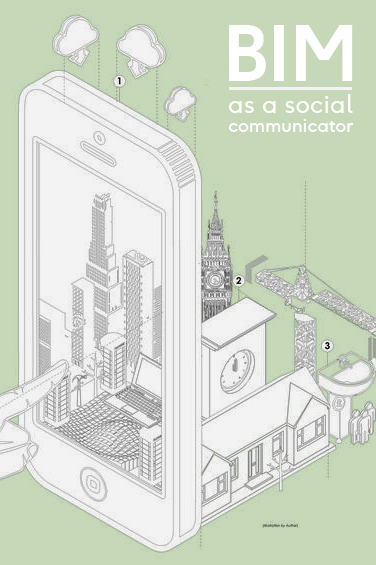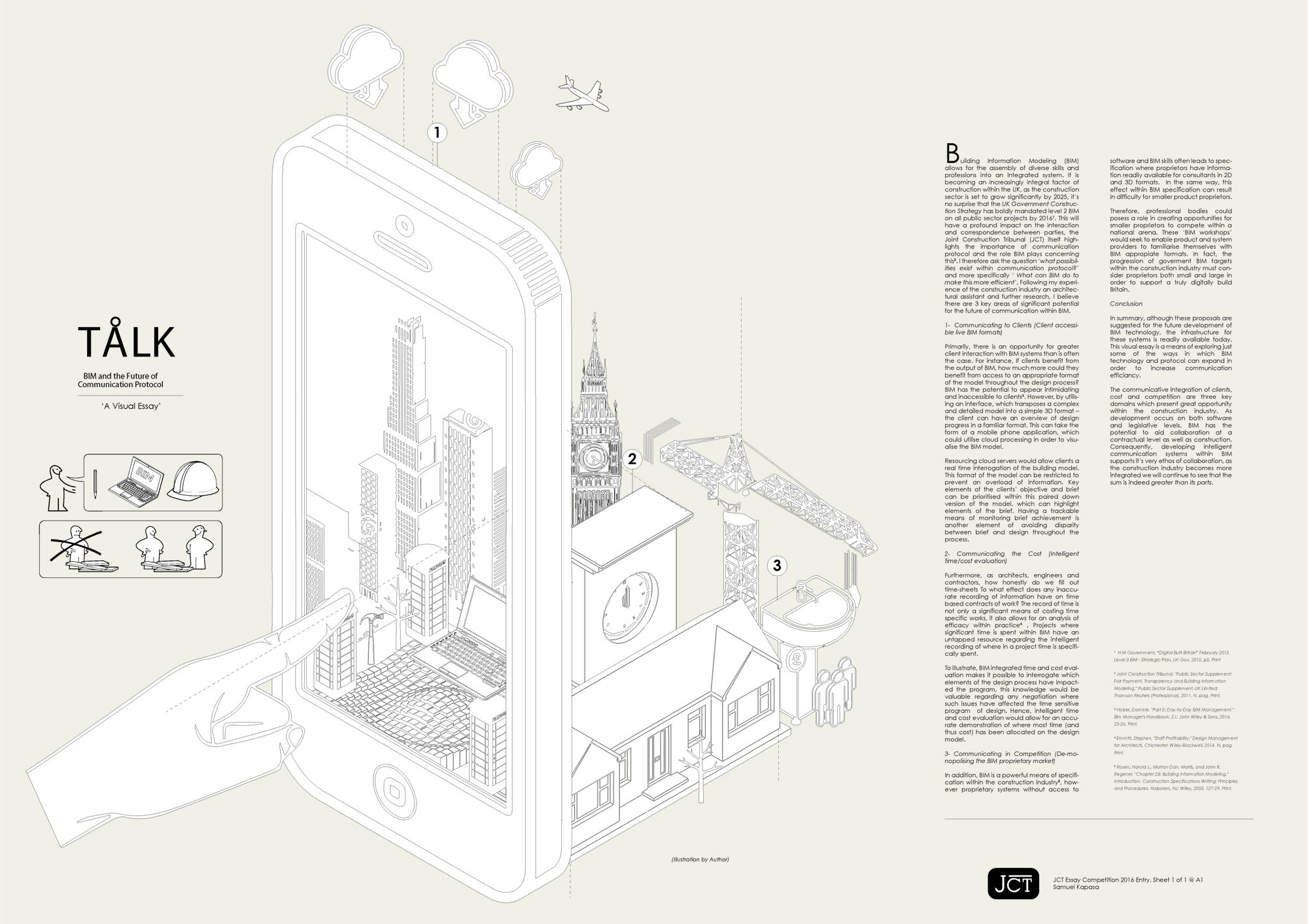
BIM
What possibilities exist within communication protocol?
Following my experience of the construction industry as an architectural assistant and further research, I believe there are three key areas of significant potential for the future of communication within BIM.
Building Information Modelling (BIM) allows for the assembly of diverse skills and professions into an integrated system. It is becoming an increasingly integral factor of construction within the UK, as the construction sector is set to grow significantly by 2025, it’s no surprise that the UK Government Construction Strategy has boldly mandated level 2 BIM on all public sector projects by 2016. This will have a profound impact on the interaction and correspondence between parties, the Joint Construction Tribunal (JCT) itself highlights the importance of communication protocol and the role BIM plays concerning this(2). I therefore ask the question ‘what possibilities exist within communication protocol? 'and more specifically ‘ What can BIM do to make this more efficient’. Following my experience of the construction industry as an architectural assistant and further research, I believe there are 3 key areas of significant potential for the future of communication within BIM.
1- Communicating to Clients (Client accessible live BIM formats)
Primarily, there is an opportunity for greater client interaction with BIM systems than is often the case. For instance, If clients benefit from the output of BIM, how much more could they benefit from access to an appropriate format of the model throughout the design process? BIM has the potential to appear intimidating and inaccessible to clients(3). However, by utilising an interface, which transposes a complex and detailed model into a simple 3D format –the client can have an overview of design progress in a familiar format. This can take the form of a mobile phone application, which could utilise cloud processing in order to visualise the BIM model. Resourcing cloud servers would allow clients a real time interrogation of the building model. This format of the model can be restricted to prevent an overload of information. Key elements of the clients’ objective and brief can be prioritised within this paired down version of the model, which can highlight elements of the brief. Having a traceable means of monitoring brief achievement is another element of avoiding disparity between brief and design throughout the process.
2- Communicating the Cost (Intelligent time/cost evaluation)
Furthermore, as architects, engineers and contractors, how honestly do we fill out time-sheets To what effect does any inaccurate recording of information have on time based contracts of work? The record of time is not only a significant means of costing time specific works, it also allows for an analysis of efficacy within practice(4) . Projects where significant time is spent within BIM have an untapped resource regarding the intelligent recording of where in a project time is specifically spent. To illustrate, BIM integrated time and cost evaluation makes it possible to interrogate which elements of the design process have impacted the program, this knowledge would be valuable regarding any negotiation where such issues have affected the time sensitive program of design. Hence, intelligent time and cost evaluation would allow for an accurate demonstration of where most time (and thus cost) has been allocated on the design model.
3- Communicating in Competition (De-monopolising the BIM proprietary market)
In addition, BIM is a powerful means of specification within the construction industry(5), however proprietary systems without access to software and BIM skills often leads to specification where proprietors have information readily available for consultants in 2D and 3D formats. In the same way, this effect within BIM specification can result in difficulty for smaller product proprietors. Therefore, professional bodies could posses a role in creating opportunities for smaller proprietors to compete within a national arena. These ‘BIM workshops’ would seek to enable product and system providers to familiarise themselves with BIM appropriate formats. In fact, the progression of government BIM targets within the construction industry must consider proprietors both small and large in order to support a truly digitally build Britain.
Conclusion
In summary, although these proposals are suggested for the future development of BIM technology, the infrastructure for these systems is readily available today. This visual essay is a means of exploring just some of the ways in which BIM technology and protocol can expand in order to increase communication efficiency. The communicative integration of clients, cost and competition are three key domains which present great opportunity within the construction industry. As development occurs on both software and legislative levels, BIM has the potential to aid collaboration at a contractual level as well as construction. Consequently, developing intelligent communication systems within BIM supports it’s very ethos of collaboration, as the construction industry becomes more integrated we will continue to see that the sum is indeed greater than its parts.

Bibliography
(Illustration by Samuel Kapasa)
- H M Government, “Digital Built Britain” February 2015 Level 3 Bim – Strategic Plan, Uk Gov, 2015, P5, Print
- Joint Construction Tribunal. “Public Sector Supplement: Fair Payment, Transparency And Building Information Modeling.” Public Sector Supplement. Uk Limited: Thomson Reuters (Professional), 2011. N. Pag. Print.
- Holzer, Dominik. “Part 5: Day-To-Day Bim Management.” Bim Manager’s Handbook. S.L.: John Wiley & Sons, 2016. 25-26. Print.
- Emmitt, Stephen. “Staff Profitability.” Design Management For Architects. Chichester: Wiley-Blackwell, 2014. N. Pag.Print.
- Rosen, Harold J., Morton Dan. Morris, And John R.Regener. “Chapter 23: Building Information Modeling.”Introduction. Construction Specifications Writing: Principles And Procedures. Hoboken, Nj: Wiley, 2005. 127-29. Print.